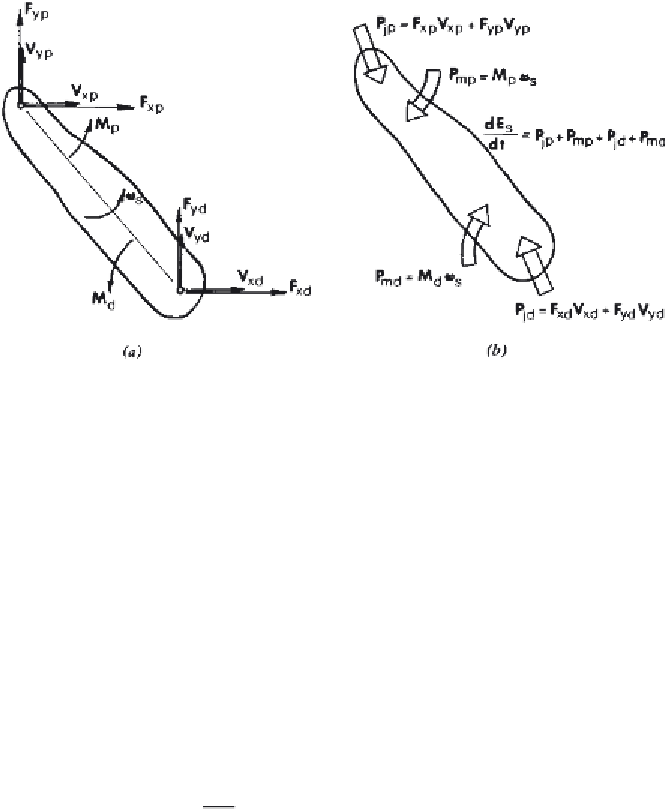Biomedical Engineering Reference
In-Depth Information
Figure 6.19
(a) Biomechanical variables describing the instantaneous state of a given
segment in which passive energy transfers may occur at the proximal and distal joint
centers and active transfers through the muscles at the proximal and distal ends. (b)
Power balance as calculated using the variables shown in (
a
). The passive power flow
at the proximal end
P
jp
, and the distal end
P
jd
, combined with the active (muscle)
power at the proximal end
P
mp
and the distal end
P
md
, must equal the rate of change
of energy of the segment
dE
s
/ dt
.
be known. Figure 6.19
b
is the power balance for that segment, the arrows
showing the directions where the powers are positive (energy entering the
segment across the joint or through the tendons of the dominant muscles).
If the force — velocity or moment —
ω
product turns out to be negative, this
means that energy flow is leaving the segment. According to the law of
conservation of energy, the rate of change of energy of the segment should
equal the four power terms,
dE
s
dt
=
P
jp
+
P
mp
+
P
jd
+
P
md
(6.28)
A sample calculation for two adjacent segments is necessary to demonstrate
the use of such power balances and also to demonstrate the importance of
passive transfers across joints and across muscles as major mechanisms in
the energetics of human movement.
Example 6.5.
Carry out a power balance for the leg and thigh segments
for frame 5, that is, deduce the dynamics of energy flow for each segment
separately and determine the power dynamics of the knee muscles (generation,
absorption, transfer):










Search WWH ::

Custom Search